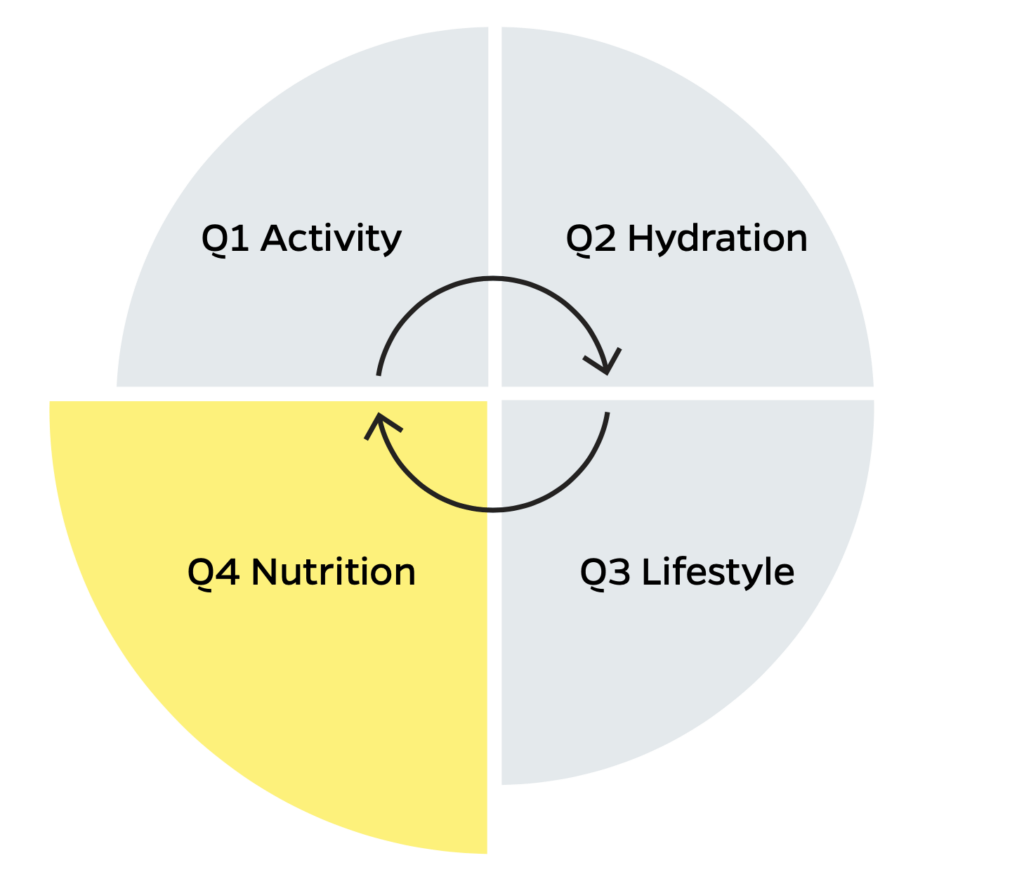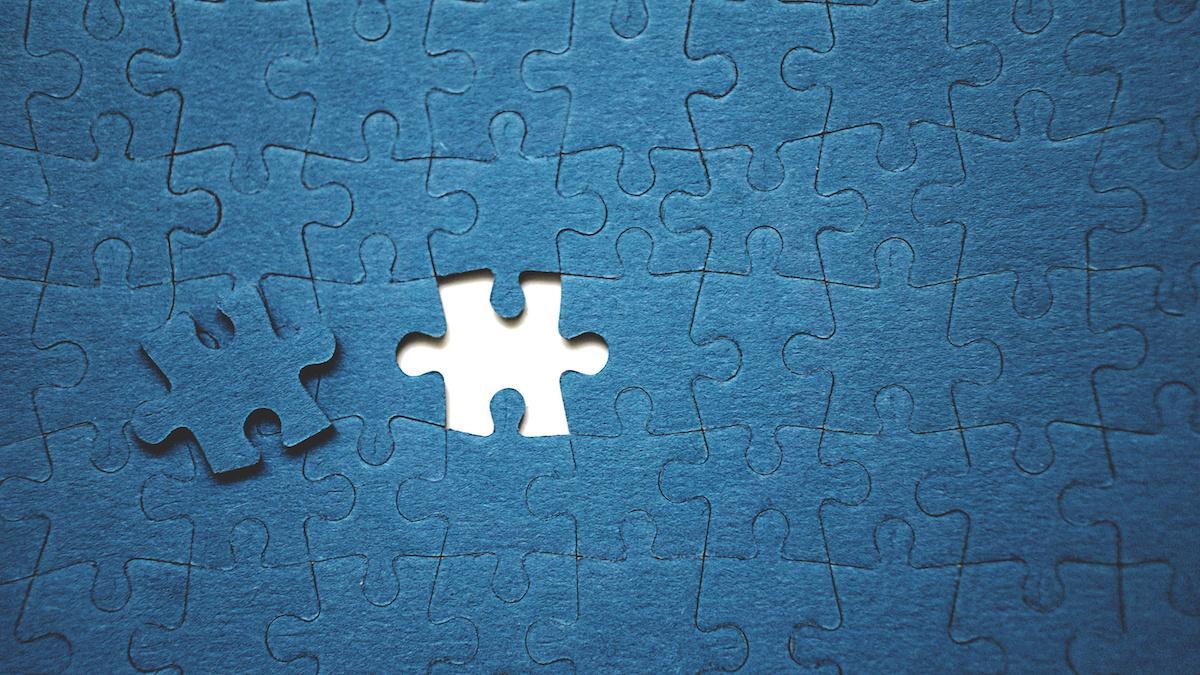In this article, we dive into the Strength Matters weight loss process and how minor alterations to daily habits can lead to significant weight loss, offering a fresh perspective that extends beyond conventional dieting methods.
Our investigation into our clients’ exercise routines and lifestyles unearthed noteworthy differences between those primarily centered around performance and those embracing a comprehensive approach.
A recurring pattern surfaced in successful weight loss journeys, encapsulating three essential habits – Walking, Water consumption, and adequate Sleep, abbreviated as WWS.
As we emphasized walking as a fundamental initial step, a noticeable enhancement in overall health became evident, eventually leading to the incorporation of all three habits.
This simple yet profound shift resulted in considerable weight loss, decreased fat percentage, and increased adherence to workout plans.
Table of Contents
Addressing the Global Obesity Challenge
We cannot overlook the escalating concern of global obesity. Presently, a staggering number of approximately two billion people worldwide are categorized as overweight or obese, which is about 30% of the global populace spanning adults and children.
While various elements have contributed to this worrying trend, our focus today isn’t to decipher these causes, but rather to contemplate on the crucial question – how do we aid those who are bearing the brunt of this epidemic?
The current approach evidently needs to be reevaluated, as it’s not delivering the desired results.
Fostering a Healthy Dialogue around Weight Loss
The beauty of human bodies lies in their diversity of shapes and sizes, and we at Strength Matters staunchly uphold this view. We firmly stand against body shaming or fat shaming of any kind, believing instead in promoting body positivity.
When we broach the topic of weight loss, our dialogue is always rooted in the context of health, longevity, and athletic performance, rather than aesthetics.
Our mission is to champion everyday athleticism and guide people to lead the healthiest, most fulfilling lives possible. However, this goal necessitates having honest, sometimes uncomfortable, discussions about weight and fat loss with our clients.
Mainstream media’s narrative on health and fatness tends to lean heavily on the potential life-threatening or debilitating medical conditions.
Fear mongering though, doesn’t always spur change. It merely illuminates one facet of the issue but does not necessarily incite compelling reasons for transformation.
In contrast, the fitness industry predominantly highlights aesthetics and rapid results. Quick-fix solutions like detoxes and 21-day challenges might momentarily ignite motivation, but they seldom pave the way for sustainable change.
These “get thin quick” schemes are temporary at best, often failing to promote long-term maintenance of weight or fat loss.
Rethinking the Role of Diet in Weight Loss
Diet plays a pivotal role in weight loss – there’s no denying that fact. Nutritionists, fitness coaches, and even the ubiquitous internet “diet gurus” stress the importance of what we eat, how we eat, and when we eat.
After all, we’ve all heard the adage, “Abs are made in the kitchen”. Consequently, most people embarking on a weight loss journey tend to prioritize the dietary aspect above all else.
Indeed, diet is crucial not only for weight loss but also for overall health and longevity. However, it’s essential to note that the effectiveness of a diet largely depends on our adherence to it.
A good diet coupled with bad habits only leads us back to square one. What good is a meticulously planned meal if we yield to the call of old habits? And changing old habits, as we all know, can be daunting, even impossible in certain situations.
Moreover, implementing drastic changes in diet and exercise simultaneously can overwhelm even the most determined individuals. No wonder so many people, particularly those over 30, grapple with weight management.
Prioritizing Habit Formation for Long-Term Success
Recognizing these pitfalls, we sought a more sustainable approach to weight loss – one that focused on habit formation. Our goal was to help people develop new habits that would last in the long run and allow the layering of new habits onto the existing ones without relapse.
We discovered a striking pattern when we stopped putting diet at the forefront. Interestingly, clients who prioritized diet showed less significant results than those who didn’t.
Additionally, their workout compliance rate was only about 57% compared to a whopping 92% for our performance clients.
What’s more, our data revealed that the average retention time for weight loss clients was just three to six months, while performance clients stayed with us for 18 to 24 months.
This discrepancy made it clear: our approach needed to shift.
Addressing these disparities made us rethink our strategy. Our investigation led us to a remarkable revelation, which will change how we approach weight loss forever.
A Deep Dive into Our Data
Unveiling the True Problem
Scientific research underscores a complex interplay of lifestyle and environmental factors in metabolism and weight control. Gaining weight or accumulating fat isn’t the result of a single, isolated factor.
In our quest to find commonalities among our clients, we turned to our in-house data, focusing on key metrics that we consistently tracked: steps taken, water consumed, and hours of sleep. The averages we discovered when comparing our weight loss clients and performance clients left us stunned.
Weight Loss Clients:
- Average steps per day: 3,109
- Average glasses of water: 3
- Average sleep per night: 4-5 hours
- Average workout compliance: 57%
Performance Clients:
- Average steps per day: 9,378
- Average glasses of water: 7
- Average sleep per night: 7.2 hours
- Average workout compliance: 92%
Our performance clients were leagues ahead, walking three times as much, drinking more than double the water, and catching two to three additional hours of sleep each night.
Eureka Moment: The Power of Basics
Our findings led to a simple yet profound realization – we didn’t need to bombard our weight loss clients with more workouts. Rather, they needed guidance in mastering the most basic yet powerful pillars of health and longevity: walking, hydration, and sleep.
It was evident that if our weight loss clients couldn’t get a handle on these rudimentary habits, how could we expect them to navigate the labyrinth of nutrition successfully?
Our performance clients, on the other hand, had seamlessly integrated these habits into their daily routine, setting the stage for higher-level fitness pursuits.
Armed with these insights, our team huddled together, filled with renewed motivation to rethink our approach. This marked the beginning of a transformational journey – the birth of the Strength Matters Weight Loss Process.
The Strength Matters Weight Loss Approach: Mastering the Four Key Pillars
We developed a unique approach we call the Strength Matters Process, designed as a comprehensive blueprint to foster successful health and fitness outcomes.
It consists of four essential components or quadrants, each playing a pivotal role in creating a sustainable, effective fitness plan. This method applies to all clients, regardless of their fitness goals.

Let me take you through each quadrant:
- Q1 – Activity: In this initial stage, our focus lies in establishing a regular physical activity routine. Here, walking takes center stage, being a fundamental human activity that we perform every day. It’s also the simplest habit to change and improve.
- Q2 – Hydration: Once the activity habit is firmly established, we progress to Q2 – Hydration. The logic behind this is straightforward: as we increase physical activity, the body naturally signals a need for increased hydration.
- Q3 – Lifestyle: The third quadrant addresses broader lifestyle habits, like sleeping patterns and sedentary behaviors. We believe that improving these factors will organically flow from the prior quadrants. Increased physical activity and proper hydration can contribute to a more restful sleep and reduce the tendency for excessive sitting or inactivity.
- Q4 – Nutrition: Finally, once all other quadrants have been addressed and habits have been established, we look into nutrition. By placing it last, we avoid overwhelming our clients with too many changes at once, and ensure they’ve built a solid foundation to support healthier eating.
As coaches, this model serves as a handy reference for us, helping to identify which quadrant needs attention at any given moment for each client. The quadrants are tackled sequentially, forming an ongoing cycle.
It’s important to note that progression to the next quadrant only occurs once the habits from the previous one have been firmly established. And by ‘established’, we’re talking about a timespan of at least 66 days to form a habit – forget the notion of 2 weeks or 21 days you’ve heard about elsewhere.
We’ve found that clients who have successfully mastered Q1, Q2, and Q3 can quickly advance to Q4, given they have the fundamental habits in place. This, however, isn’t a rushed process.
The Strength Matters Process is more than a theory; it’s an evidence-based approach backed by our clients’ data. It takes the raw numbers from our in-house data and translates them into actionable steps. It’s simple in concept, but transformative in execution.
The next section of this blog post will elaborate on how we’ve applied this process to achieve successful outcomes.
The Start of a New Approach
As we stepped into the uncharted territory of a new approach, we felt a mix of anticipation and curiosity. We set our sights on two pivotal goals for our clients:
1) accomplish a flawless 100% compliance rate with their workouts (at least twice per week), and 2) reach the milestone of 10,000 daily steps. The clock was ticking – they had 60 days to conquer these targets.
Here’s a glimpse into the exact process we followed:
- Clients were asked to procure a step-tracking device if they didn’t already own one. Most of our clients opted for a Fitbit or Apple Watch.
- We calculated their average daily step count over the past 14 days.
- With the help of our tracking software, we assigned a daily task, pushing them to hit their personalized average step count per day plus an extra 500 steps. So if a client had an average of 3500, we’d encourage them to strive for 4000 steps per day.
- To ensure transparency, clients were required to share a picture of their daily step count with their coach.
- While they were instructed to continue their regular workouts, we emphasized the most important factor – achieving the daily step target.
- Post 60 days, clients were asked to log their water consumption and sleep habits over a week’s time.
The experiment was initiated with ten determined individuals who were eager to embrace this shift.
The initial 14 days were promising. Each client achieved their daily step target, and in some cases, even surpassed their average step count by a robust 2000 steps per day.
After witnessing such impressive compliance, we raised the bar, increasing the daily step target for each client, ranging from an additional 1000 steps to an ambitious extra 3000 steps.
While we continued the same routine, focusing on daily steps and weekly workouts, we skillfully steered their queries about nutrition, water, or sleep back to the task at hand.
The mantra was simple – keep walking.
Striding Towards Success
Post the 60-day period, we noticed a significant surge in both workout compliance and daily step count. While the average workout compliance reached 81%, the average daily step count soared to over 7,000 steps. Some determined clients even achieved 100% workout compliance and triumphantly hit the 10,000 step mark.
Here’s a comparison to illustrate the transition:
Weight loss clients BEFORE the new initiative:
- Average number of steps per day: 3,109
- Average number of glasses of water: 3
- Average number of hours of sleep per night: 4-5 hours
- Average workout compliance rate: 57%
Weight loss clients AFTER the new initiative:
- Average number of steps per day: 7,362
- Average number of glasses of water: 5
- Average number of hours of sleep per night: 5-6 hours
- Average workout compliance rate: 81%
Walking, hydration, and sleep all saw substantial increases. Specifically, walking experienced a staggering 100% increase, water consumption surged by 60%, and sleep hours saw a 25% boost. All this while the workout regime remained unchanged.
The Power of Walking
The focus shifted solely to walking. We held each client accountable to attain a personalized number of steps each day. The beauty of this shift lay in its simplicity.
One remarkable outcome that deserves the spotlight is the average weight loss of 11 pounds during this period. It was a testament to the power of small but consistent changes in lifestyle habits.
Looking Ahead
These results marked a milestone, not just for the clients but for us as well. It reinforced the importance of the Strength Matters Process. Starting with activity (Q1), hydration (Q2), and lifestyle (Q3) before we delve into the complexities of nutrition (Q4).
This journey with our clients reiterated the importance of mastering the basics before moving on to more complex habits. The initial results have laid a strong foundation for what lies ahead.
We can’t wait to explore how further mastery of these fundamental habits can catalyze even more significant changes in the lives of our clients.
The Ripple Effect of Weight Loss
The concept of the “Domino Effect” illustrates how one event can set off a chain of similar occurrences. It’s a fascinating phenomenon often seen in various aspects of life, and we hypothesized that the act of walking daily could be the initiating domino that sets off a series of lifestyle changes leading to weight loss.

This belief in the transformative power of a single habit is backed by theories of human behavior, such as those put forth by James Clear. Clear argues that the Domino Effect occurs primarily due to two reasons:
- The interconnectedness of the routines and habits that make up our lives and
- Our inherent tendency towards commitment and consistency.
With this understanding, we embarked on our initiative to incrementally increase our clients’ daily steps, ultimately aiming for 10,000 steps a day – a universally recognized benchmark associated with good health.
As our clients started their journey of walking more, we began to observe interesting shifts in their other lifestyle habits. Alongside the increase in daily steps, we saw an uptick in workout consistency, improved hydration, and increased sleep duration.
For example, average workout consistency rose by 24%, water intake by 67%, and sleep duration increased by an average of 2 hours per day. This suggested that the simple act of walking was serving as a catalyst for broader lifestyle changes, in line with the Domino Effect.
To corroborate this, a 2012 study from Northwestern University found a reduction in daily fat intake in people who decreased their amount of sedentary leisure time. Interestingly, the study participants were never explicitly instructed to eat less fat.
Yet, their nutritional habits improved simply because they spent less time on the couch, which reduced opportunities for mindless eating. Just like in our scenario, one positive habit was leading to another.
Thus, by holding our clients accountable to a personalized daily step target, we were able to witness the Domino Effect in action. The increased activity set off a ripple of positive changes across other aspects of their health and lifestyle.
By building the habit of walking 10,000 steps a day, we believe we’re setting our clients on a path of self-perpetuating improvement, where the development of one good habit naturally leads to the formation of others.
Unlocking the Potential of 10,000 Steps
A significant number of our clients had achieved mastery over the first aspect of our four-component process, the Activity Quadrant or Q1, by successfully reaching and maintaining the 10,000 steps-a-day goal over a span of 60 days.
We followed a science-backed approach that proves that an action repeated for 66 days morphs into a habit.
Having mastered Q1, these everyday athletes’ focus was then shifted to the Hydration Quadrant or Q2. Most had already started consuming more water due to the increased physical activity, with several reaching the target of 7-8 glasses a day.
Monitoring Progress and Instilling Habits
For a period of two weeks, we closely monitored the hydration habits of the clients who had managed to maintain their water intake at 7-8 glasses a day, alongside walking 10,000 steps. After confirming the consistency of these habits, we then moved our focus to the Lifestyle Quadrant or Q3.
However, for the clients who hadn’t quite reached the 10,000-step milestone, we continued to focus on the Activity Quadrant. We worked with them to find unique solutions tailored to their routines and lifestyle, devising strategies to help them reach their personal goal.
This could mean anything from recommending they park farther away from their destination, take stairs more often, or incorporate more walking into their daily routines.
Conquering Personal Milestones
For these clients, 10,000 steps was their personal equivalent of the four-minute mile. Our mission was to help them break this barrier, confident that significant breakthroughs in other areas would follow. But the first step was to establish walking and exercising as a consistent daily habit, integrating it seamlessly into their lives.
Regardless of where each client was in their fitness journey, we observed consistent weight loss and improvements in athletic performance.
Their compliance rates remained above the 80% mark, showcasing their dedication to the process. Not only were they losing weight at a more accelerated pace, but they were also getting stronger and fitter, demonstrating the undeniable efficacy of the Strength Matters Process.
Adapting a Lifestyle for Longevity
With both the Activity and Hydration quadrants securely in place, we began transitioning our focus onto the Lifestyle quadrant, also known as Q3.
This phase involved a deep dive into the more nuanced facets of our clients’ lives, evaluating elements that often go unnoticed but significantly impact overall health and weight loss progression.
At the forefront of our lifestyle intervention was the integral aspect of sleep. Over the years, scientific research has underscored the importance of sleep in weight management, overall health, and cognitive function.
Our clients had established a firm routine of physical activity and hydration; however, it was critical to ensure they also embraced quality sleep as a non-negotiable part of their wellness journey.
To facilitate better sleep, we guided our clients to devise and maintain a consistent sleep schedule, ensuring they were granting their bodies the rest it required to recover from daily physical activities.
We also emphasized the importance of cultivating an environment conducive to sound sleep, suggesting strategies like minimizing light and noise disruptions, maintaining a cool room temperature, and investing in comfortable bedding.
Moreover, our clients were encouraged to incorporate relaxing pre-bedtime routines. These could include reading a book, practicing mindfulness or meditation, or simply disconnecting from digital devices an hour before bedtime.

As clients began to prioritize and improve their sleep, we noticed a significant upswing in their daily energy levels, mood, workout performance, and even cognitive function.
Another integral component we addressed in the Lifestyle quadrant was sedentary behavior. Despite having a regular workout routine, it is possible for individuals to lead a sedentary lifestyle, primarily if they engage in prolonged periods of sitting or inactivity.
To tackle this, we introduced our clients to innovative ways of incorporating movement into their everyday routines.
For example, we suggested options like using a standing or treadmill desk for work, taking frequent walk or stretch breaks, conducting walking meetings, or even converting TV time into active sessions by adding simple exercises during commercial breaks.
By substitifying long periods of inactivity with these bouts of light activity, our clients could sustain their calorie-burning process and maintain a more active lifestyle overall.
Through addressing these lifestyle factors, our clients began to understand that the journey to health and longevity extends beyond diet and exercise.
This broadened perspective equipped them with the tools they needed to craft a more balanced, holistic lifestyle – one that was sustainable in the long term and conducive to their weight loss and health goals.
Mastering Nutrition – The Final Piece of the Puzzle

As our clients were becoming experts in walking, hydration, and establishing a healthier lifestyle, it was finally time to address the final component: Nutrition. The saying “You can’t outrun a bad diet” may be trite, but it holds a lot of truth.
Although we’ve seen substantial progress by prioritizing activity, hydration, and lifestyle, we believe nutrition is a vital element to achieve lasting health and weight loss success. But we’ve learned that the timing of addressing nutrition matters.
Unlike traditional weight loss programs that put diet at the forefront, we’ve discovered that leaving the dietary changes to the end of our process helps our clients succeed in the long term.
They’ve already established solid habits in other aspects of their lives, which gives them a strong foundation to make impactful dietary changes.
At Strength Matters, we take a habit-based approach to nutrition. Instead of handing over a restrictive meal plan or advocating for the latest diet fad, we focus on instilling sustainable eating habits that our clients can carry with them for life.
We understand that each person is unique with individual preferences and needs, so we customize our approach accordingly.
To start, we generally recommend incorporating more protein into every meal. Protein is not only crucial for muscle repair and growth, but it also helps keep you fuller for longer. This simple adjustment can significantly influence caloric intake and promote weight loss without requiring a drastic dietary overhaul.
But it’s not just about adding protein; we aim to cultivate mindfulness around eating. We encourage our clients to tune into their hunger and satiety cues, to eat slowly, and to savor their food.
This mindfulness can help break the cycle of mindless eating, leading to a healthier relationship with food and, in many cases, a reduction in overall caloric intake.
Our approach to nutrition is gradual. Just like with the walking, hydration, and lifestyle changes, we implement one small change at a time, allowing our clients to adjust and make each change a habit before moving on to the next one.
In the realm of nutrition, there’s a lot to tackle, from portion sizes to meal timing to the quality of food sources. But armed with their already-developed skills in habit formation and the solid foundation of an active, well-hydrated, and well-rested body, our clients are ready to conquer this final piece of the puzzle.
This sequential approach of prioritizing activity, hydration, and lifestyle before nutrition may seem unconventional. Still, our in-house data and client success stories speak for themselves.
By mastering one habit at a time and treating nutrition as the capstone rather than the cornerstone, our clients are achieving sustainable weight loss and, more importantly, a healthier and more active life.
Holistic Transformation
At Strength Matters, we understand that the journey toward health and fitness isn’t just about a number on the scale or the size of your jeans. It’s about a holistic transformation that impacts all facets of your life.
When our clients progress through our four-quadrant model — beginning with activity, moving onto hydration, then lifestyle, and finally nutrition — they are not just losing weight or getting fit; they’re redefining their relationships with their bodies, their environment, and most importantly, with themselves.
What we’ve realized through the years is that change starts from within. It’s a ripple effect, much like the domino effect we discussed earlier. A small shift in one’s daily habits, such as walking a little more, can trigger substantial changes in other areas.
As our clients find themselves more active, they naturally tend to hydrate more. As they become more active and hydrated, their quality of sleep improves. And as all these elements align, they become more mindful of their nutrition.
But the transformation extends beyond the physical. There’s a sense of empowerment that comes with being able to change and control one’s habits. Our clients gain confidence as they see themselves committing and sticking to their goals — not for a month or two, but as a long-term lifestyle change.
Moreover, we’ve seen that as our clients become healthier, they also become happier. There’s a significant improvement in their mood and energy levels.
They report feeling less stressed, more content, and generally more positive. And this positivity extends to their relationships and work, creating a virtuous cycle of continuous improvement.
The body’s transformation through the four quadrants often mirrors an internal journey of self-discovery and growth. Our clients start to understand their bodies better — what it needs, how it responds, and how to nourish it.
They also develop a deep sense of respect and care for themselves, seeing their bodies not as enemies to be controlled or punished but as allies in their journey toward health and happiness.
At Strength Matters, we don’t just aim for weight loss or athletic performance; we aim for a complete, holistic transformation. We are not just changing bodies; we’re changing lives.
And the incredible journey our clients go through, with its trials and triumphs, proves that it’s entirely possible to redefine and reclaim your health, one step, one glass, one hour of sleep, and one meal at a time.
Final Thoughts
As we have traversed the Strength Matters Process, we have seen the profound changes that can be achieved when we prioritize simple, sustainable steps towards health and fitness.
This isn’t a quick-fix scheme, but a methodical approach for lifelong wellness, guiding clients not merely towards weight loss but towards a holistic improvement in their quality of life and performance.
Our method emphasizes the potency of habit and consistency, rooting each phase in everyday activities such as increased movement, hydration, quality sleep, and conscious nutrition.
By focusing on the holistic picture, we transition away from rigid diets or exhaustive exercise routines towards a more realistic and maintainable approach, fostering healthier relationships with our bodies and minds.
As fitness professionals, we have the power to guide our clients – the everyday athletes – on this transformative journey. We’ve seen remarkable changes unfold – weight loss, heightened energy, improved performance, and better overall wellbeing.
However, the most substantial transformation is often the mindset shift, as clients realize they have the power to change their lives through these incremental, consistent steps.
As we conclude our exploration of the Strength Matters Process, let this notion resonate – coaching towards better health and fitness is not about rapid results; it’s about fostering a lifelong commitment.
It’s about helping clients take one step at a time, mastering one habit before progressing to the next. It’s about adapting strategies to individual lifestyles and enjoying the journey towards a healthier, happier, and stronger existence.
Remember, as coaches, we are the pillars of support and guidance on this journey. We have the ability to inspire transformative change in our clients. It all commences with the first step – are we ready to guide them through it?
Let’s bring forth the power of sustainable, holistic coaching, and witness the ripple effect it has on the lives of our clients.
FAQ
What is the Strength Matters Weight Loss Process?
The Strength Matters Weight Loss Process is a holistic approach to sustainable weight loss that emphasizes the establishment of healthy habits. It progresses through four quadrants: Activity, Hydration, Lifestyle, and Nutrition, prioritizing a methodical, sequential mastery of each area.
How Does the Strength Matters Weight Loss Process Work?
The process begins with Activity, where the focus is on increasing daily movement, specifically walking. Once clients establish a habit of regular physical activity, the program progresses to Hydration, emphasizing the importance of proper daily water intake. The third quadrant, Lifestyle, targets overall lifestyle habits such as quality sleep and reducing sedentary time. Only when these three quadrants are mastered does the process move to Nutrition, where the focus is on balanced, mindful eating.
Why Does the Strength Matters Weight Loss Process Prioritize Activity Over Nutrition?
The Strength Matters Weight Loss Process prioritizes activity over nutrition because establishing a foundation of regular physical activity can significantly influence other health behaviors, including eating habits. By building an active lifestyle first, clients are better prepared to make healthier nutrition choices later.
What Type of Activity Does the Strength Matters Weight Loss Process Promote?
The Strength Matters Weight Loss Process promotes consistent daily activity, with an initial focus on walking. The primary goal for clients is to establish and maintain a habit of walking a specific number of steps each day, gradually increasing until they reach 10,000 steps. This level of regular, moderate activity helps kickstart the weight loss journey without the need for intense workouts.
How Long Does It Take to Progress Through Each Quadrant in the Strength Matters Weight Loss Process?
The time taken to progress through each quadrant will depend on the individual, their existing habits, and their level of commitment. However, research suggests that it takes at least 66 days to form a new habit. The process encourages mastery of each quadrant before moving to the next, ensuring each new habit is sustainable.
What Does Nutrition Look Like in the Strength Matters Weight Loss Process?
In the Strength Matters Weight Loss Process, nutrition focuses on balanced, mindful eating rather than restrictive meal plans. Clients are taught to understand portion sizes, increase protein intake, and be more aware of the types and quantities of food they consume. The goal is to develop a healthier relationship with food that supports long-term weight loss and maintenance.
What Results Can One Expect from the Strength Matters Weight Loss Process?
Results will vary between individuals, but clients can generally expect to see improvements in weight loss, physical performance, energy levels, sleep quality, and overall well-being. The main advantage of the process is the development of lifelong habits that lead to sustained weight loss and improved health.

